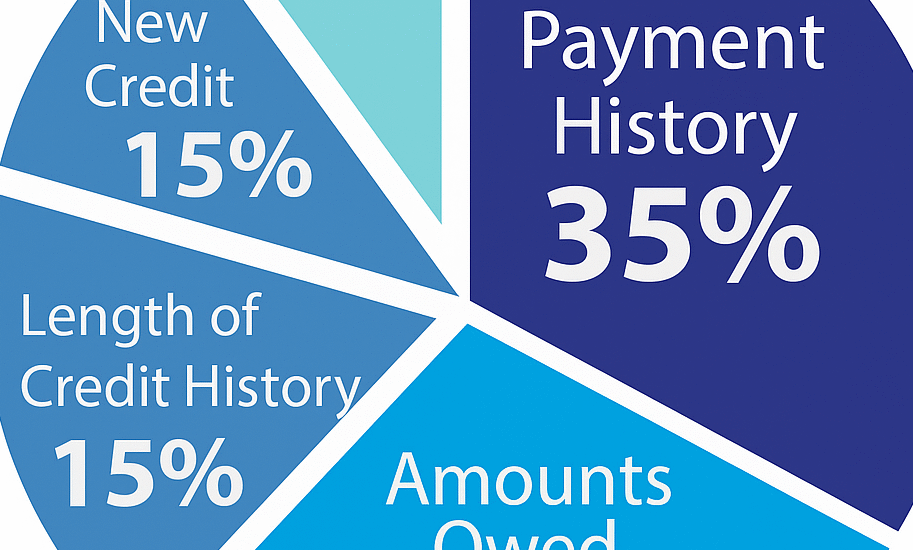Credit Score Recipe (How credit score is formed)
- 27 June 2025
- Posted by: Jbmortgage
- Categories: Education, First Time Homebuyers, New to Canada, Purchase

How Is Your Credit Score Actually Formed? Let’s Break It Down
Your credit score is more than just a number — it’s your financial reputation. Whether you’re planning to buy a home, refinance, or just want better rates, understanding how your score is calculated can help you make smarter choices. Here’s a quick breakdown of the five key components:
1. Payment History — 35%
This is the most important part of your credit score. Lenders want to see that you pay your bills on time.
![]() Represents 35% of your score.
Represents 35% of your score.
Missed or late payments can lower your score significantly, so be consistent and set reminders if needed.
2. Credit Utilization — 30%
This is the amount of credit you’re using compared to your total available credit.![]() Counts for 30% of your score.
Counts for 30% of your score.
For example, if your credit card limit is $1,000, try to keep your balance under $300–350. Keeping your usage low shows lenders you’re managing credit responsibly.
3. Length of Credit History — 15%
The longer your credit accounts have been open, the better.![]() Adds 15% to your score.
Adds 15% to your score.
This is why it’s usually a good idea not to close old accounts, even if you don’t use them much — they help lengthen your credit history.
4. Credit Mix — 10%
Lenders like to see that you can handle different types of credit — like credit cards, car loans, lines of credit, or mortgages.![]() Impacts 10% of your score.
Impacts 10% of your score.
Having a variety of accounts helps you look more reliable and balanced in managing credit.
5. New Credit Inquiries — 15%
Every time you apply for credit, it triggers a “hard inquiry.” Too many inquiries in a short time can lower your score.![]() Accounts for 15% of your overall credit score.
Accounts for 15% of your overall credit score.
Be strategic with credit applications — only apply when necessary and space them out if possible.
Final Thoughts
Understanding your credit score is the first step toward improving it. Whether you’re aiming for homeownership or just better financial health, small habits — like paying on time, reducing balances, and maintaining old accounts — make a big difference.
https://youtube.com/shorts/M7MAmvl0_Kc
